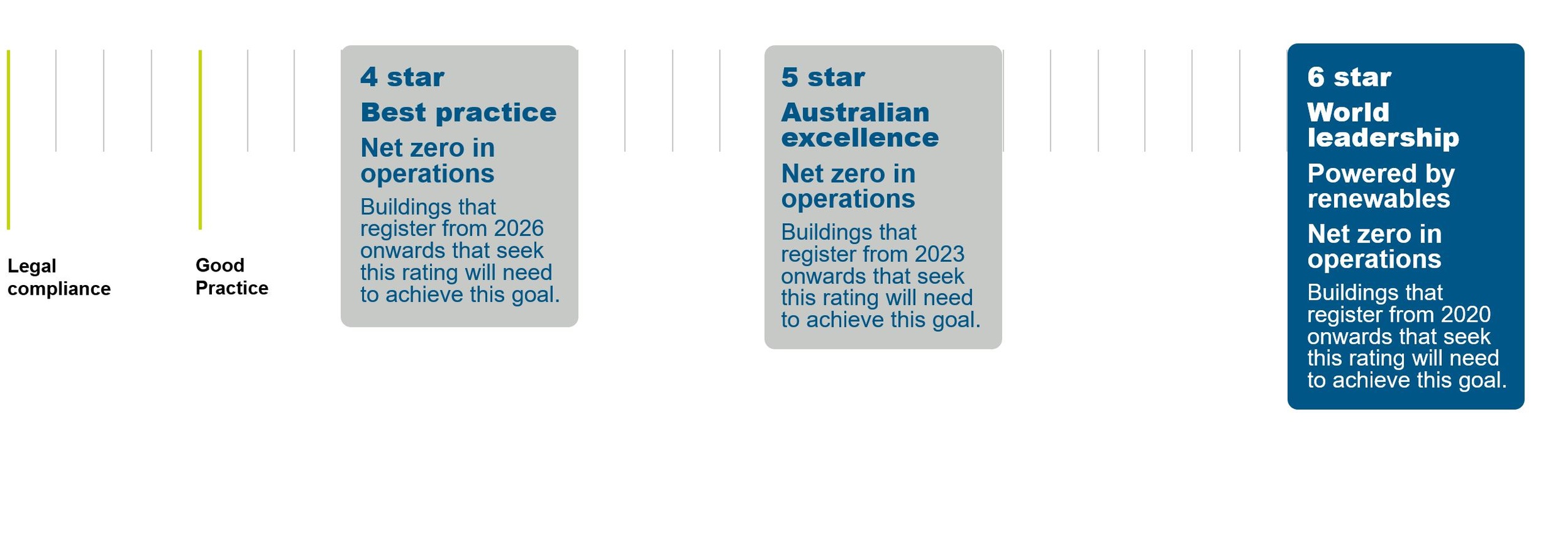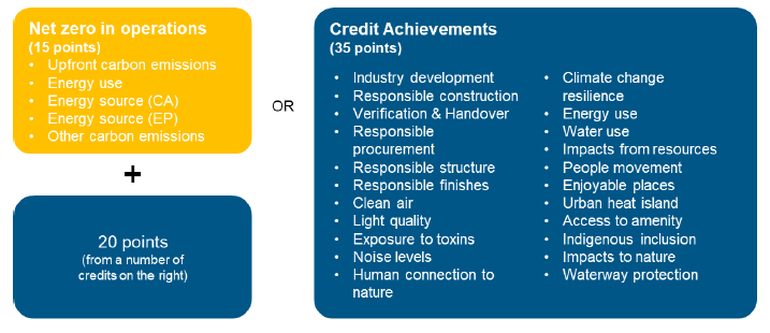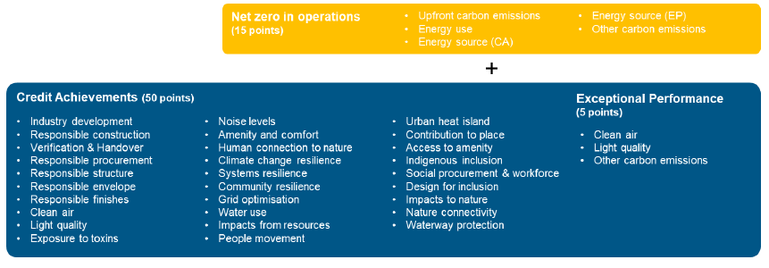What does a new 4, 5 and 6 Star Green Star building look like?
29 Oct 2020
Today, in a year marred by catastrophic bushfires locally and a pandemic globally, it is with hope and a clear vision that we share our new Green Star Buildings rating tool. This next step for Green Star is a sustainability rating system for new buildings that ensures they can respond to changes in climate, protect natural surroundings and focus on the health of the people who use them. Industry asked for a user-friendly tool that can help our sector move the needle on climate change. We heard these calls and then we acted and what you see today is a system that makes the difference between 4, 5 and 6 Star Green Star buildings clearer than ever. This clarity was only achievable thanks to industry input, 150 expert panel members and 10 early access partners.
For any project to be Green Star certified it must first meet 10 minimum expectations. These expectations are set to ensure all Green Star rated buildings meet a basic definition of a green building, that is a building which is resilient to changes in climate, carbon positive and healthy for the people who use it.
Jorge Chapa, Head of Market Transformation, explained the tool’s health and wellbeing credits address issues like noise, daylight, reduction of toxins and clean air.
“The rating tool also goes further and highlights opportunities to improve on these issues and explores how to bring occupants closer to nature. The rating tool then expands on our classic definition of health to introduce issues around community resilience, social cohesion, and design for inclusion amongst other things,” said Jorge.
All certified buildings must be designed and built to meet these expectations:
- protect environmentally significant areas
- emit less carbon in construction and operations
- be water efficient
- have improved air, light, acoustics, and product finishes
- promote physical activity
- be built with climate change in mind
- manage environmental impacts during construction
- embrace the diversity of our population
- enable practices that reduce operational waste
- be verified to work
Once these expectations are met, a project is rewarded points for each credit achieved and the total points reached determines the Star rating awarded.

4 Star
This rating reflects a Best Practice environmental performer. It builds on the minimum expectations to deliver a building that is either net zero carbon in operations or a higher performer in energy, water, and health related issues (15 out of 100 points). All 4 Star Green Star rated buildings must meet the 10 minimum expectations, plus meet one of the following:

5 Star
A rating that demonstrates Australian excellence by being a high environmental performer and addresses social issues relevant to the building owner (35 out of 100 points). All 5 Star Green Star rated buildings must meet the 10 minimum expectations and make these achievements:

6 Star
This achievement showcases World Leadership. It is reserved for highly efficient buildings fully powered by renewables while addressing a significant number of environmental and social issues while contributing to the community (70 out of 100 points). All 6 Star Green Star rated buildings must meet the 10 minimum expectations and these achievements:

To keep our industry tracking toward our shared goal of a healthy and sustainable built environment, a net zero carbon in operations path links each of the ratings outlined above. The path defines a building that is fossil fuel free, powered by renewables, highly efficient, built with low carbon materials and offset with nature.
“When it comes to offsets, where they are accepted in the rating tool, they should prioritise natural solutions to carbon capture, that is, afforestation, reforestation or land use activities. The rating tool recognises that nature has value by itself, by the effects it has on people, and as one of the best tools to reduce our impacts to and from climate change. It doubles the weighting of the Nature category and follows the priorities that we outlined in the Building with nature report,” explained Jorge. Right now, the net zero path is available to 4 and 5 star rated buildings and is a requirement for 6 star rated buildings but to keep our industry focused on targets outlined in the Paris Agreement and the UN Sustainable Development Goals. From 2023 buildings will need to be net zero to achieve a 5 Star rating and from 2026 for a 4 Star rating.
Looking beyond these targets, the net zero path requirement will apply to any building completed on or after January 2030. We know that is a bold ambition, but after seeing the solutions and innovation presented by industry during the development of Green Star Buildings, we know it is one that is already coming to life.